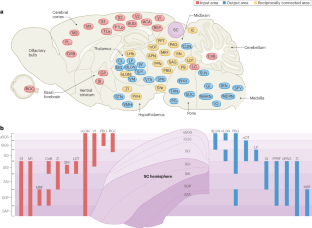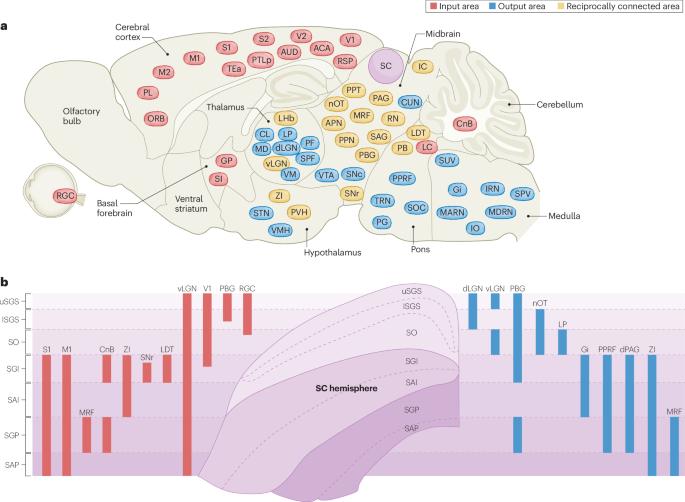上丘视觉运动转换所依赖的基因定义神经元类型
IF 26.7
1区 医学
Q1 NEUROSCIENCES
引用次数: 0
摘要
上丘(SC)是一种保守的中脑结构,对于将视觉和其他感觉信息转化为运动行为非常重要。数十年来对众多物种的研究已使上丘脑及其非哺乳动物同源的视神经束成为大脑中研究最深入的结构之一,目前已有关于其解剖组织、广泛的输入和输出以及在许多反射和认知行为中的重要功能的丰富信息。令人兴奋的是,最近利用现代基因组学和生理学方法进行的研究已开始揭示 SC 中多种神经元亚型及其在视觉运动转换中的独特功能。研究还开始揭示SC神经元亚型如何形成错综复杂的回路,以介导视觉处理和视觉引导行为。在此,我们回顾了最近关于由 SC 介导的视觉运动转换的细胞类型和神经元回路的发现。我们还强调了这些新进展可能带来的重要未来发展方向。本文章由计算机程序翻译,如有差异,请以英文原文为准。


Genetically defined neuron types underlying visuomotor transformation in the superior colliculus
The superior colliculus (SC) is a conserved midbrain structure that is important for transforming visual and other sensory information into motor actions. Decades of investigations in numerous species have made the SC and its nonmammalian homologue, the optic tectum, one of the best studied structures in the brain, with rich information now available regarding its anatomical organization, its extensive inputs and outputs and its important functions in many reflexive and cognitive behaviours. Excitingly, recent studies using modern genomic and physiological approaches have begun to reveal the diverse neuronal subtypes in the SC, as well as their unique functions in visuomotor transformation. Studies have also started to uncover how subtypes of SC neurons form intricate circuits to mediate visual processing and visually guided behaviours. Here, we review these recent discoveries on the cell types and neuronal circuits underlying visuomotor transformations mediated by the SC. We also highlight the important future directions made possible by these new developments. The superior colliculus is a structure in the midbrain that has a key role in transforming sensory information into motor actions. In this Review, Cang et al. discuss the cell types and neural circuits that underlie visuomotor transformations mediated by this structure.
求助全文
通过发布文献求助,成功后即可免费获取论文全文。
去求助
来源期刊

Nature Reviews Neuroscience
NEUROSCIENCES-
自引率
0.60%
发文量
104
期刊介绍:
Nature Reviews Neuroscience is a multidisciplinary journal that covers various fields within neuroscience, aiming to offer a comprehensive understanding of the structure and function of the central nervous system. Advances in molecular, developmental, and cognitive neuroscience, facilitated by powerful experimental techniques and theoretical approaches, have made enduring neurobiological questions more accessible. Nature Reviews Neuroscience serves as a reliable and accessible resource, addressing the breadth and depth of modern neuroscience. It acts as an authoritative and engaging reference for scientists interested in all aspects of neuroscience.
 求助内容:
求助内容: 应助结果提醒方式:
应助结果提醒方式:


